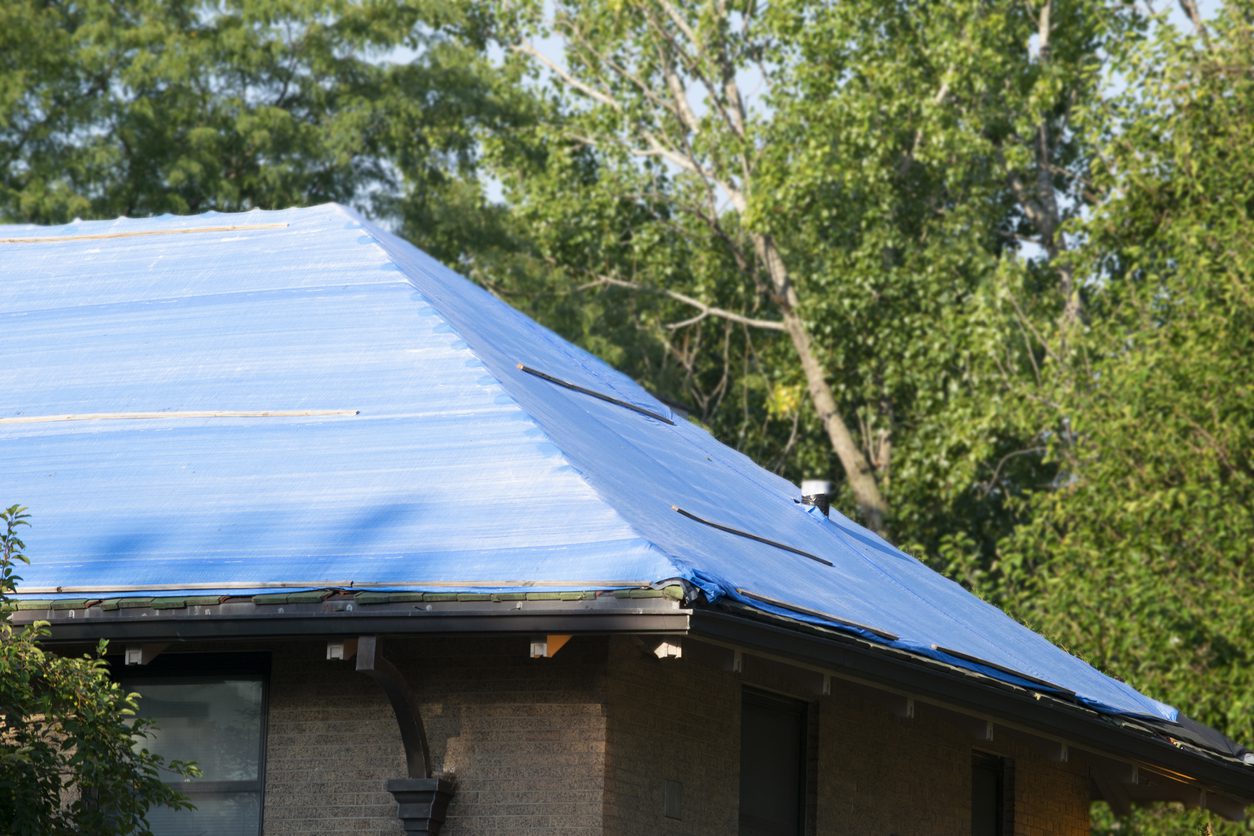Is a Tarp Considered a Roof? Western District of Pennsylvania Rules a Jury Should Decide

At the Spring 2021 Professional Public Adjusters Association of New Jersey meeting, I presented a course with Engineer Bill Halkiadakis entitled “How to Select and Use Engineering Experts in Property Claims.” The presentation included a case study on a claim where the insureds were renovating their property to add an additional story and a tarp was placed on the roof. While the tarp was on the roof and before the additional story was added, the tarp was blown off causing extensive damage to both the building and contents contained inside the residence. The carrier, Nationwide, applied coverage to the building component of the claim, but denied the contents portion.
While the building portion of the policy had “all risk” language, the contents coverage was named peril. The specific policy language is as follows:
COVERAGE C – PERSONAL PROPERTY
We cover accidental direct physical loss to property described in Coverage C caused by the following perils. . . .
2. Windstorm or hail.
Direct loss caused by rain, snow, sleet, sand or dust driven through roof or wall openings made by direct action of wind, hail, or other insured peril covered.
During the presentation, I mentioned my anticipation of a Motion for Summary Judgment from the carrier on this issue and discussed the findings of Kunji Harrisburg, LLC v. Axis Surplus Insurance Company,1 a case argued by Anthony DiUlio, a fellow frequent speaker at PPAANJ.
Kunji is an Eastern District of Pennsylvania matter which contained the same question – is a tarp considered a roof? In Kunji, Judge Beetlestone weighed competing interpretations of what is considered to be the “roof.” One of the experts cited the definition from the Dictionary of Architecture and Construction, which defines roof as “the top covering of a building, including all materials and constructions necessary to support it on the walls of the building; provides protection against rain, snow, sunlight, extremes of temperature, and wind.” The insured’s interpretation of a roof included that the tarp was the outermost cover of the structure, and Judge Beetlestone found that this interpretation created a genuine issue of material fact.
As anticipated, Nationwide filed a Motion for Summary Judgment on the tarp issue. In their brief, Nationwide relied on Valentino v. Harleysville Preferred Insurance Company,2 a Pennsylvania trial level opinion where the trial court looked at the common definitions of the terms “roof” and “tarpaulin” and found that a tarp was not considered a roof. Nationwide also incorrectly stated that the Valentino court was the only court in Pennsylvania to directly address this issue, overlooking or omitting the Kunji decision. After filing an opposition brief citing to the Kunji decision, the Western District of Pennsylvania found the following:
The term ‘roof’ is not defined in the policy…In Kunji…The court explained: ‘whether a tarp qualifies as a roof turns on the durability and relative permanence of the covering’. . . .
The court identified several factors set forth in the case law: whether ‘a reasonably prudent householder would consider [the temporary covering], if left in that condition for a month or months, or longer, as adequate against all risks of wind and rain which could be reasonably anticipated as likely to happen…’ and whether the covering was ‘durable enough to serve its key purposes: ‘to cover and protect a building against weather-related risks that reasonably may be anticipated’. . . .
Like in Kunji, here there are material disputes of fact about the durability and relative performance of the ‘roof’ and how well it was secured that prevent summary judgment. In November or early December 2017, [the contractor] took the old roof off of the house and removed the roof trusses. The house was covered by plywood and a tarp and was secured four times by contractors. Viewed in the light most favorable to [Plaintiffs], the second tarp system (as reinformed with wood and straps by the contractor) was in place for several months and was sufficient to protect the house from water and snow damage for the winter of 2017-2018… Nationwide – which bears the burden of proof to establish its policy exclusion – did not present any contrary evidence about durability, relative permanence, or the components of a second tarp system. Nationwide did not submit an expert opinion, which the Kunji decision suggested may be helpful. . . .
As a matter of law, there is insufficient evidence for the court to find that the tarp was not a ‘roof’ or that Nationwide can deny coverage on that basis.
If anyone is interested in obtaining the briefs and Order relative to the Motion, please email me at DBallard@MerlinLawGroup.com
_____________________________________________________
1 Kunji Harrisburg, LLC v. Axis Surplus Ins. Co., No. 19-1213 (E.D. Penn. Mar. 18, 2020).
2 Valentino v. Harleysville Preferred Ins. Co., 2015 WL 7572410 (Pa. Super. Feb. 3, 2015).







